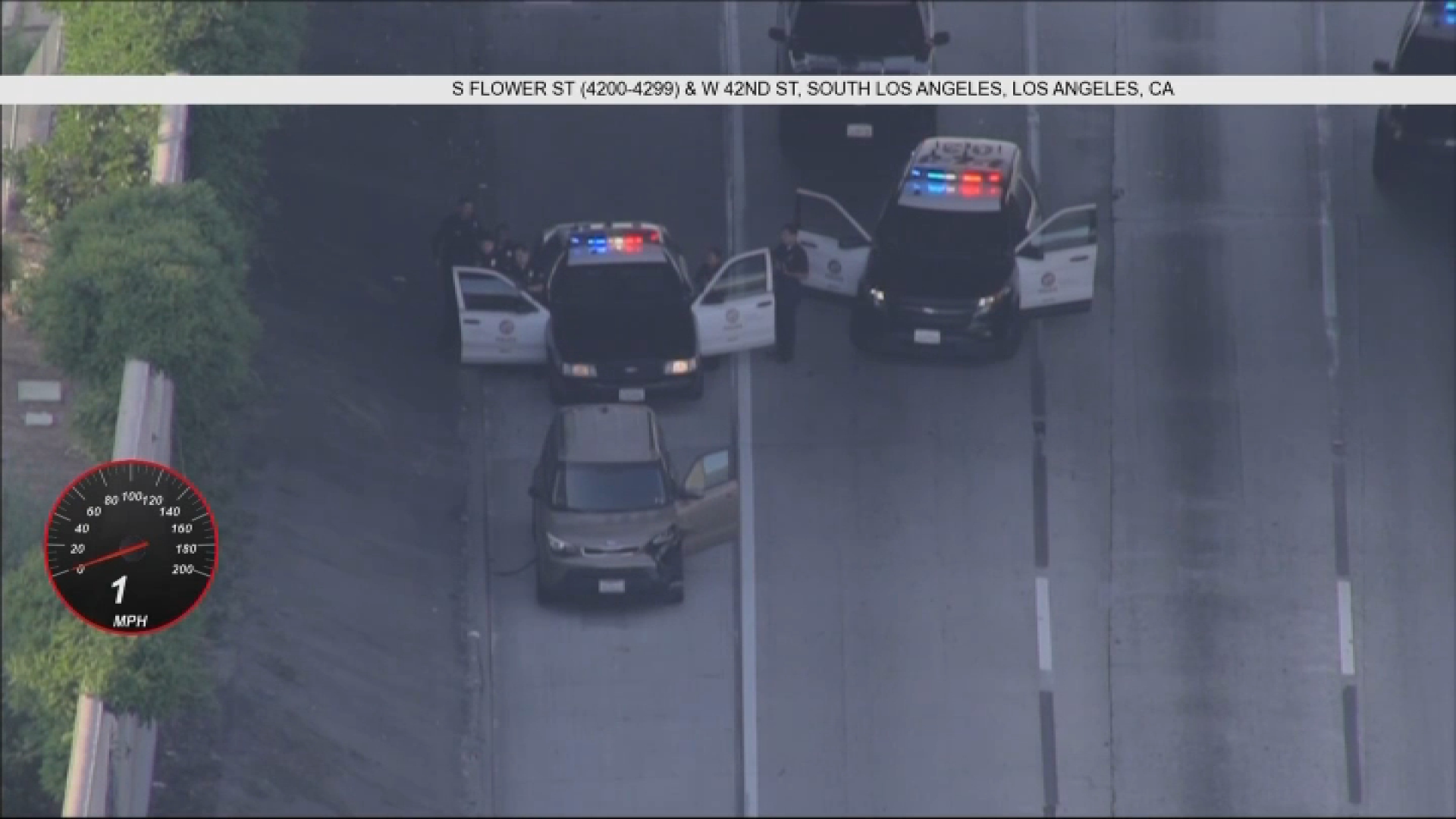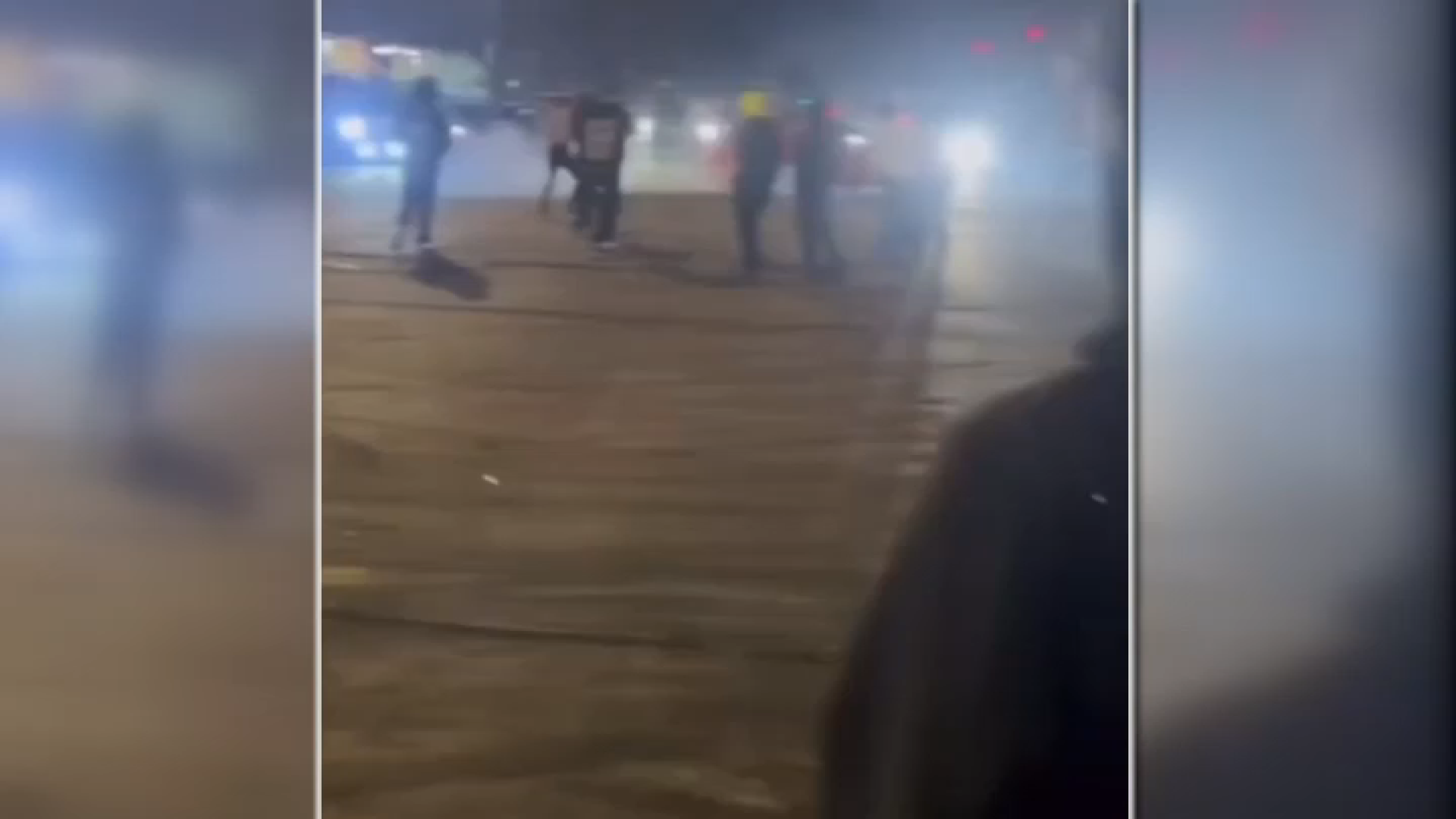Residents in foothill neighborhoods under the threat of mudslides and flooding surrounded homes with sandbags this week as communities prepared for what the National Weather Service described as the "largest rain event" in Southern California since March 2011.
The one-two punch of storms bring the possibility of mudslides in areas burned by wildfires, but also much-needed rain and snow after the state's driest year on record.
- Updated Article: More Powerful Storm on the Way
In Glendora, more than 18,000 sandbags -- enough to cover four miles if placed end to end -- have been distributed to residents to protect properties from floods and debris flow. Flash flooding is possible in some foothill areas below burn areas, including the hills that burned in January's Colby fire above the San Gabriel Valley community.
- Viewer Images: Send Us Your Weather Photos | Email Weather Photos
"There's going to be so much rain in just a couple of days that a lot of areas might not be able to handle that much rain," said NBC4 meteorologist Crystal Egger. "It just runs downhill like a concrete driveway."
Two storms will usher moisture into the region, moving down from Northern California Wednesday morning before bringing about a half-inch to an inch of rain to Southern California.
The heaviest rain Wednesday is expected after the evening commute and into the overnight hours. The more powerful of the two storms will arrive Thursday evening and bring up to 2 inches of rain in central and southern valleys, 2 to 4 inches in foothill areas and 6 inches of rain in some mountains.
The National Weather Service described it as the most significant storm in the last three years in Southern California, adding that thunderstorms are possible Friday and Saturday. Showers could continue into early Sunday.
- Download: NBCLA Weather App
The city of Glendora issued an Orange Level alert for residents in the burn area, meaning voluntary evacuations are in effect. Residents are directed to remove vehicles, trash bins and other obstructions from streets prior to evacuating.
News
Top news of the day
The city's evacuation center is at the Crowther Teen & Family Center located at 241 W. Dawson Ave.
Residents who do not evacuate will be asked to sign a Refusal to Evacuate form, indicated they understand the risk involved.
"The alert level was raised to orange from yellow due to the Weather Forecasts and the field conditions within the foothills of Glendora," according to a city advisory.

The city could issue a Red Level alert, which includes mandatory evacuations.
Glendora Mountain Road will be closed Thursday morning through noon Monday.
Crews placed concrete barriers along several streets in Glendora, a San Gabriel Valley community of about 50,000 people. The city provided sandbags for residents at fire stations, and more than 7,000 had been handed out, City Manager Chris Jeffers told the San Gabriel Valley Tribune Tuesday.
The National Weather Service also warned of the potential for mud and debris flows from the burn area of the May 2013 Springs Fire. The wildfire scorched nearly 38 square miles of the Santa Monica Mountains as it burned from the edges of suburban homes down to the beach about 50 miles west of downtown Los Angeles.
Other wildfires statewide left scarred landscapes over the past year, including a 400-square-mile area devastated by last summer's forest fire in and adjacent to Yosemite National Park in the Sierra Nevada.
- Running Dry: Drought Resources, Updates
The snow level will remain high -- above 7,500 feet during daytime hours, dipping to around 6,500 feet tonight and Thursday -- and gusty south-to- southwest winds will buffet mountain areas, especially "over higher terrain," the National Weather Service advisory said.
A wind advisory will be in effect in Los Angeles County in the San Gabriel Mountains and the Antelope Valley from noon today until 9 p.m. Thursday, the NWS said, forecasting south-to-southwest winds of between 20 and 30 miles per hour and gusts of between 45 and 55 mph this afternoon.
Storms Arrive Amid Dry Spell
As for the drought impact, the effects could be more significant than moisture left by a storm earlier this month. That so-called Pineapple Express storm brought rain and snow to Northern California and increased the Sierra Nevada snowpack, but it still remained at 29 percent of normal.
Sierra snow runoff provides a major source of water for California.
Only very small amounts of precipitation reached Southern California, making this week's weather the first major event of the year. Downtown Los Angeles has recorded only 0.23 inch of rain this month, 3.05 inches below normal to date.
The location has received only 1.23 inches since July 1, a deficit of 9.52 inches.




